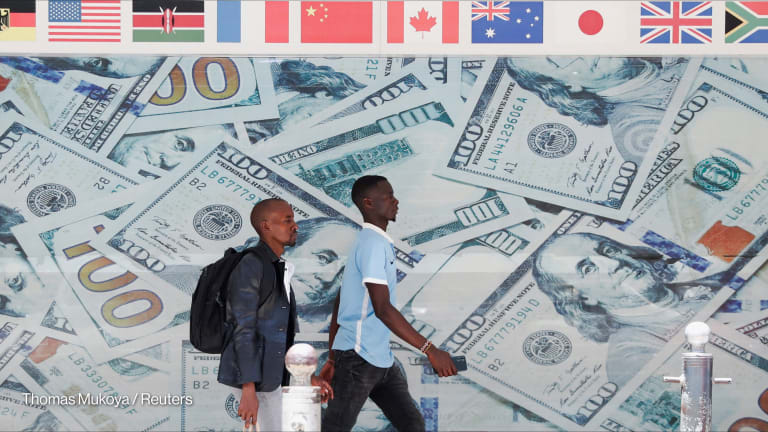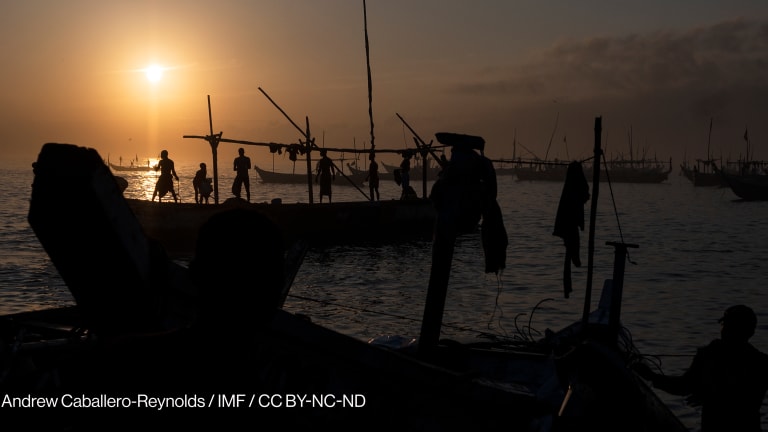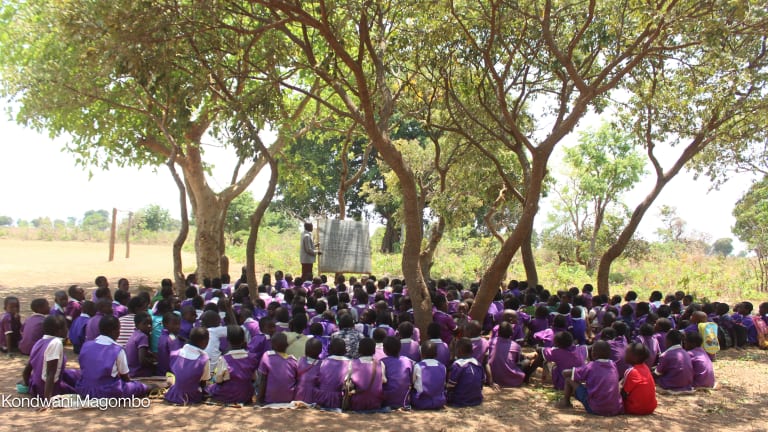
More than a decade after campaigners managed to cancel hundreds of billions of dollars of debt for the world’s poorest countries, there is a new crisis looming. Africa’s debt levels are rapidly rising again, and in 2016, they increased by over 10 percent to $600 billion, more than double the levels recorded a decade ago.
There’s a growing recognition that lending plays an important role in plugging the massive gap in financing Africa’s development. The Billions to Trillions narrative has encouraged both national governments and international financial institutions to look to debt markets and historically low interest rates as a viable financing source to scale and catalyze crucial development programs.
Yet also rising is debt service, which already weighs heavily on domestic African budgets — and the rising rate of defaults is far too familiar. Ten years after many countries began the World Bank and International Monetary Fund’s Heavily Indebted Poor Countries initiative, one in three of the 37 HIPC-eligible countries in Africa are either in high-debt distress or in debt crisis according to the IMF, a number that has increased by 33 percent since 2015. In 2016 alone, Mozambique, the Congo, Chad, and Zimbabwe were unable to pay their debts. We are already one step behind in preventing another debt crisis.
Africa’s rapid debt accumulation has been helped by sluggish growth and low interest rate policies in Europe and the U.S. in recent years and it has attracted additional private sector lending — making new debt entirely different from that held by HIPC countries in the early 2000s. Commercial loans have fewer concessional terms, shorter maturity, and are issued in foreign currency, exposing countries to more risk if their export earnings fluctuate — as is the case for commodity dependent economies. A chunk of debt comes from new lenders, including China and others that are not signed up to multilateral frameworks, as well as new instruments such as Sukuk bonds, which are favored in Islamic countries, and have an increasing West African presence, including in Nigeria and Senegal.
At present there are no internationally agreed mechanisms for vital issues such as transparency in issuing new debt, and for fair and transparent arbitration mechanisms if a country defaults. The consequences of these challenges are therefore twofold. First, countries can take on debt under opaque circumstances, as recent cases in Mozambique and Congo have illustrated. Second, if a country does default, it is vulnerable to unfavorable restructuring terms that can allow the private sector to profit from its debt crisis, as happened in Argentina.
Mozambique is a prime case; in 2016, it was revealed that the country had an additional $2 billion in previously undisclosed sovereign backed debt. The loans were for three private companies, to be invested in private security and tuna fishing businesses, and were guaranteed by the state. It was Credit Suisse and Russia’s VTB bank that provided the loans — which, with the help of senior officials, bypassed the Mozambican Parliament. Three years later, after exorbitant fees were paid to banks, interest rates were fiddled, and the loans finally exposed, not a fish has been caught. Following an independent audit by the company Kroll, one-quarter of the money cannot be accounted for at all. Now in default, with a suspension of IMF programming and all aid, Mozambican citizens are paying the price for this illegitimate debt — with service cuts and absent development programming leaving a gap in basic needs provision.
Perhaps a little late, the IMF has updated their Debt Sustainability Framework to reflect new risks for use in 2018. Improved transparency for debt sustainability was at the top of the agenda for the IMF, G-20, and U.N. Conference on Trade and Development in 2017, yet no country took the lead to form a compact. Commercial lenders have been the ones to act, with Credit Suisse initiating a Transparent Lending Covenant, under which banks will voluntarily disclose lending information online. While this is a welcome positive step, it is not enough.
The opportunity is three-fold. First, lending must be more transparent. With no internationally recognized rules on when and what details of a transaction are disclosed and to whom, it’s almost impossible to monitor lending, and police bad behavior. The banking sector can and should immediately set voluntary enhanced disclosure practices. Simultaneously, global financial governance must be strengthened — the Paris Club, G-20, Organisation for Economic Co-operation and Development, U.N., IMF, and regional institutions such as the African Development Bank must lead.
Second, equitable and transparent workout mechanisms must be agreed. Countries such as the U.K., under whose law 90 percent of sub-Saharan African debt is issued, must amend laws to make arbitration fairer and more transparent, as has already been done in France and Belgium. This includes clauses to prevent vulture funds from profiting from sovereign debt distress — more than $1 trillion of which currently remains unprotected.
Finally, civil society organizations and journalists that monitor these new government debts, both in their country and internationally, must be supported. We need to strengthen capacity to expose and fight those who feed off the current lack of transparency — surrounding lending. This ensures governments are held accountable to the citizens that the debt is supposed to help, who will benefit from the investments in health, infrastructure, and social spending — and who ultimately, are the same citizens that will be paying it back.








